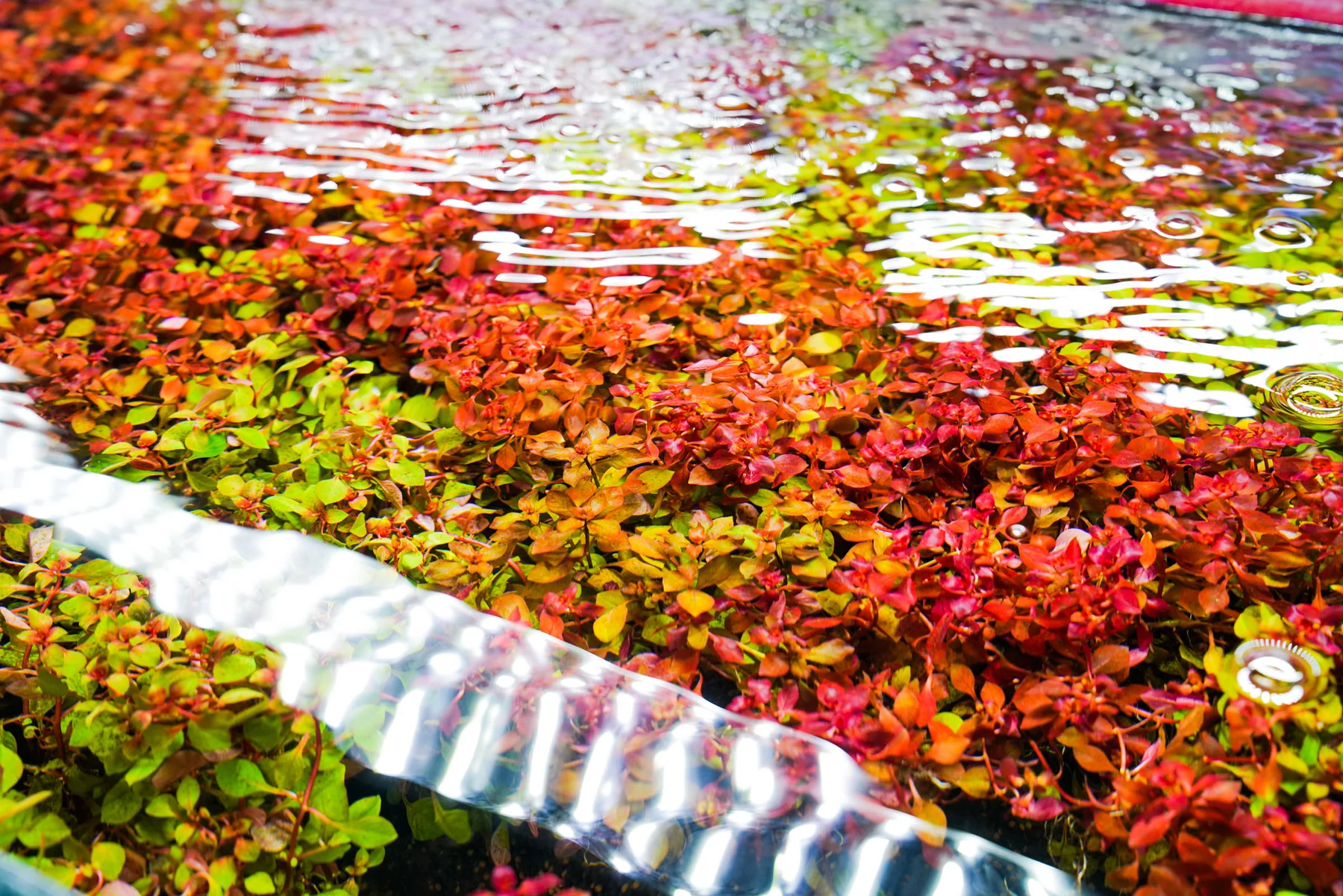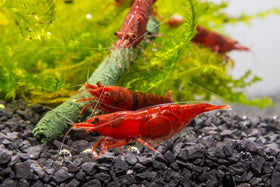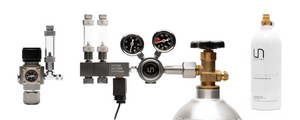
How to Quarantine New Aquarium Plants
Written by: Tammy (@aquarist_tl) and Team Buce Plant
Most of us are eager to get our newly received aquatic plants into our established planted tanks, but there are potential pests and harmful chemicals that could be transferred into the aquarium through newly added plants. Pests (like snails) are a natural part of the environment, and unless you purchased tissue culture plants, these hitchhikers might make your planted tank their new home. Many of these multiplying pests can become an eyesore, while others are harmful to your fauna and can result in the loss of your fish and shrimp.
In this article, we’re going to go over why it's important to quarantine new plants before putting them into a fresh water aquarium, and methods to ensure that they’re safe to be added.
Before we dive deeper, I’d like to note that tissue culture plants / plants grown in-vitro are safe to add immediately into your aquariums because they are sterilized and clean of any harmful pests, bacteria, algae, and pesticides. You can check out this article for more details: Tissue Culture vs. Potted Plants.
Why Should You Quarantine Plants?

Regardless of the source, harmful or unwanted organisms can stow away in our aquariums if plants are added without being properly quarantined. These include:
- Pests & Parasites (snails, planaria, hydra, etc.) - While snails are harmless and mostly just an eyesore, planaria and hydra have been known to be able to kill small fish fry and shrimp. These pests and parasites are too difficult to see with the naked eye, so it’s common that aquarists only notice them after they’ve already taken over the tank! Introducing a pest problem into your aquarium can sometimes result in fauna fatality.
- Algae - There are so many strains of algae, and the best way to avoid getting any into the aquarium is to start clean. Once algae is established into the tank and is living under the right conditions, it takes off quite quickly. Algae growth can be difficult and frustrating to manage, taking the focus away from your beautiful live plants and other tank inhabitants.
- Diseases & Bacteria - Like the dangers of adding new fish, aquarium plants could also bring in bacteria or other microorganisms that can cause our fish/shrimp to become sick. If the plant had been staying in a tank contaminated with some sort of illness, it could possibly contaminate it’s new tank with it as well.
- Pesticides - One danger that not many know about is that many plant farms use pesticides to control insect problems. Aside from that, many imported plants require the use of pesticides due to USDA regulations (bucephalandra especially). Although distributors may take time to clean and rinse these aquatic plants, the chemicals can linger and get transferred over into our tanks. Shrimp are highly sensitive creatures and susceptible to pesticides, so as these chemicals slowly leach out into the water, shrimp keepers may notice their shrimp suddenly dropping dead shortly after their new plants were added.

How to Quarantine Aquarium Plants
Similar to how we quarantine fish, we will want to keep our new plants in a separate fish-free tank or container than the one they’ll be going in.
- Note: BEFORE putting the plants in their quarantine tank, it is best to first sterilize the plants in order to ensure the least possible chance of adding anything harmful to the tank. Below are a few different sterilization methods.
It’s recommended to keep them in this quarantine tank and under observation for 3-4 weeks before adding them into the aquarium they’re meant to go in. Make sure the plants have adequate lighting and fertilizers to do well during this time. A filter is not necessary.
Make sure to perform routine water changes during the quarantine period as well. If you want to shorten this time frame to 1 week, make sure to implement full water changes daily AND dose the quarantine tank with a water conditioner, like SL-Aqua Black More Stabilizer daily, which will help bind pesticides and other residues.
Recommended Methods of Sterilizing Aquatic Plants
Before sterilizing, you should remove any dead or dying leaves as well as rock wool from the roots of the aquarium plants. Then, thoroughly rinse the plants and set them aside. Next is the sterilization process.
Here are a few sterilization dips and their respective procedures that you can use to disinfect your aquarium plants:
Bleach Dip
- Get some unscented bleach and make sure it does not contain any extra chemicals that could harm the plants.
- Put on some disposable gloves to stay safe.
- Get a container for the dip and mix 1 part of bleach for every 20 parts of water into it.
- Prepare another container of water with a dose of added dechlorinator. We recommend using either Seachem Prime or SL-Aqua Black More Stabilizer.
- Fully submerge the plants into the bleach solution for approximately 90 seconds for sensitive plants. Tougher plants like species of Echinodorus, Bucephalandra, and most stem plants can stay under for 120 seconds. Extremely hardy plants like Anubias and Java fern can remain submerged for 150 seconds.
- Once they’re done soaking, thoroughly rinse the plants under a sink for at least a good minute. Try to remove any remaining bleach off of them.
- Place them into the container with water and a dose of dechlorinator for about 5-10 minutes. They can then be added into their quarantine tank.
Hydrogen Peroxide Dip
- Grab a bottle of 3% hydrogen peroxide and mix it with water.
There are two dosages you may use: A light mix for sensitive plants will use 2-3ml per gallon and a strong mix will use 1 part hydrogen peroxide for every 3 parts water (i.e. 25% hydrogen peroxide). Please note, the light mix has been said to not kill pests like snails or their eggs. - Place the plants into the solution for 20 minutes. You may want to move the container they’re in into a dark area, since light causes hydrogen peroxide to break down faster.
- Take the plants out of the solution and rinse them thoroughly in the sink.
- Place them into a container with of water and a dose of dechlorinator for about 5-10 minutes before placing them into the quarantine tank.

Alum Soak
- Pick up some alum (aluminum sulfate) from your local grocery store if you don’t already have some.
- Create a mixture of 1 tablespoon (or 1-2 teaspoons for sensitive plants) per gallon of water.
- Soak the aquarium plants in the solution for 3 days.
- Remove the plants from the solution and rinse them in a container of water and a dose of dechlorinator for at least 5-10 minutes.
- Place the plants into the quarantine tank.

There are many conflicting procedures and instructions for these sterilization methods, but above are a few to choose from. Quarantining plants plays an important role in keeping fish and shrimp safe. May this blog post inform those interested in planted tanks and help them have a clean start!
Tell us - Was this article helpful? Please comment your thoughts below!
If you have any questions regarding this article, please DM us on Instagram or Facebook so we can assist you - @buceplant





Comments
Leave a comment